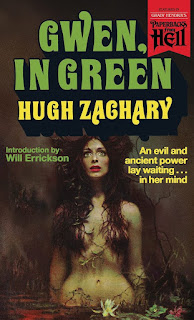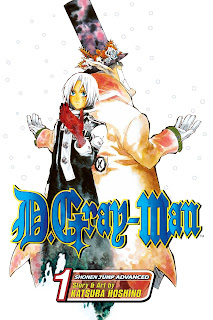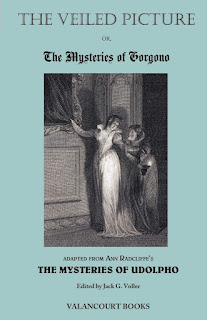I've played a good bit of Blades in the Dark, starting back when it was just the pre-release documents that were polished into the final game, but until recently I hadn't actually run it. For a long time, the game felt daunting, but I realized the other day I probably understood enough of it to make an honest attempt, so I put the call out on my Discord, got three players roped in, and went for it. You can read the write up for the first half of the session here and the second half here. Below are my thoughts on running the game and introducing it to a group of players who hadn't played before.The Good
Blades in the Dark is a game that you can get going pretty quickly, even if a group has no prior experience with it. The playbooks are admittedly busy looking on a visual level, but you can make characters speedily by just focusing on the stuff that will come up in play. I had them pick backgrounds, vices, a special ability, and assign their "skill points," which was more than enough to start playing with. Frankly, we could have skipped backgrounds and left vices for the wrap up of the session.
Everything else on the playbooks got worked out when we needed it. They picked friends and enemies during the "gathering information" part of the pre-heist action, for example. The core mechanic--roll dice equal to your dots, pick the single highest die to determine your result--is easy to explain and immediately graspable. Other mechanics, such as resistance rolls or the engagement roll, were easy enough to explain when they came up.
Blades in the Dark's specialized mechanics for emulating heists and other crime-related activity, such as taking stress to push yourself for more dice, Devil's bargains, and flashbacks, really go a long way toward pushing the genre as an integral part of play. As above, these mechanics were easy enough to bring into the game when the opportunity presented itself.
One rule that my players especially seemed to like concerned loadout. In Blades, you start off a mission by deciding whether you're taking a light, average, or heavy load of equipment and gear with you. You don't have to pick exactly which items are in your loadout. You can check the items off on your playbook, asserting that you brought it with you, as play progresses. This is such a great way to do things, especially for the genre. Sure beats turning the game into "guess what would be useful ahead of time" or a minigame of managing your inventory like an accountant.
The session was also extremely easy to prep: I used a very basic premise, "there's these weird sisters who have a magical meteorite, and you've got to steal it," made a couple of notes about rooms in their house and the possible encounters therein, and left everything else up to improvisation. The brief details for the Dimmer Sisters and their allies Roslyn and Irelen were enough to slot into my idea for a heist without much work; there's a lot of utility in the book's brief setting descriptions. In a long-running game, you'd want to invent some of your own content, but there's more than enough in the book to play with for quite some time.
Divergences of Style and Preference
It's important to note that I probably ran this session in a way that is not necessarily the intended play style. If the example of play in the Blades in the Dark book is anything to go by, and it should be since it is the example of play, the game is meant to be played in a more mechanistic, detached way. There's not a ton of talking in character, but there is a lot of discussion of what will be rolled. Similarly, I've found that livestreams with John Harper, the game's author, running the game feel more removed from the roles and setting than I'm used to.
I suppose this is what people mean by "storygaming," as the focus is more on the wider scope of the narrative than the immediacy of the characters, but as a critique even that feels like it misses the mark for me as a way of describing the style. For a "fiction-first" game, as Blades proclaims to be, it often feels like more attention is paid toward filling in clocks and other mechanical elements rather than the drama of being part of a criminal enterprise.
I ran things differently. The back and forth of setting scenes by describing the environment and letting the players' decisions guide what happens wasn't that different from how I run D&D. I also kept some of the stuff going on mechanically entirely behind the scenes. I used progress clocks, but I kept them to myself instead of making them part of the "play space." I can see the benefit of sharing access to the progress clocks, but I didn't want the mechanics to be the focus. The play is the thing, in my opinion. Folk on the Blades in the Dark reddit will tell you this is absolutely the wrong way to play, but it worked for me without any issues.
Additionally, it felt more organic in that the players had to determine the magnitude of the threats and tasks in front of their characters by probing the fiction, instead of looking at the mechanical doodads.
A Few Critiques
Although the basic mechanics are easy to grasp on the player side, the intricacies of position and effect are not immediately easy to implement on the GM side of the table. I'm sure the "handling time" of position and effect would become easier with practice, but because those tools are meant to be loose and able to accommodate a wide range of situations in play, they can feel vague and a little shapeless in terms of concrete rules advice.
Also, I think that Blades sometimes feels a little more like a toolkit for a game than than a laser-focused game in its own right. It gives you a lot of tools, but you can't (and shouldn't try to) use them all in one session. There is enough going on with actions, resistance rolls, engagement rolls, flashbacks, taking stress, resisting harm, Devil's bargains, etc. that it can feel like juggling chainsaws. (I definitely messed up a few instances of resisting harm in the swing of things, for example.) I tried to work in as much of the mechanical options as I could to give the players a sense of what the game is about, but there were still mechanics we didn't touch, such as assisted actions, project clocks, leading an action, etc.
The mechanics are pretty intricately tied together, but avoiding a few of them won't make the game fall apart. In addition, the end of session rules for indulging in vices, healing harm, gaining heat as your gang's activities affect the criminal underworld, etc. are all very cool, but keep in mind that they also bulk up the amount of rules that need to be checked and mechanics that need to be referenced. Again, I'm sure it becomes smooth with practice, but there are a lot of moving pieces to negotiate that definitely do not fit the "universal mechanic" way of doing things, if that matters to you.
In Closing
I really do think Blades in the Dark is a great game. I had a blast and I'm pretty sure my players had fun too. I own too many games that have a premise I enjoy, but the idea of introducing them at the table just doesn't appeal to me. Not so with Blades. I would definitely run this again.























